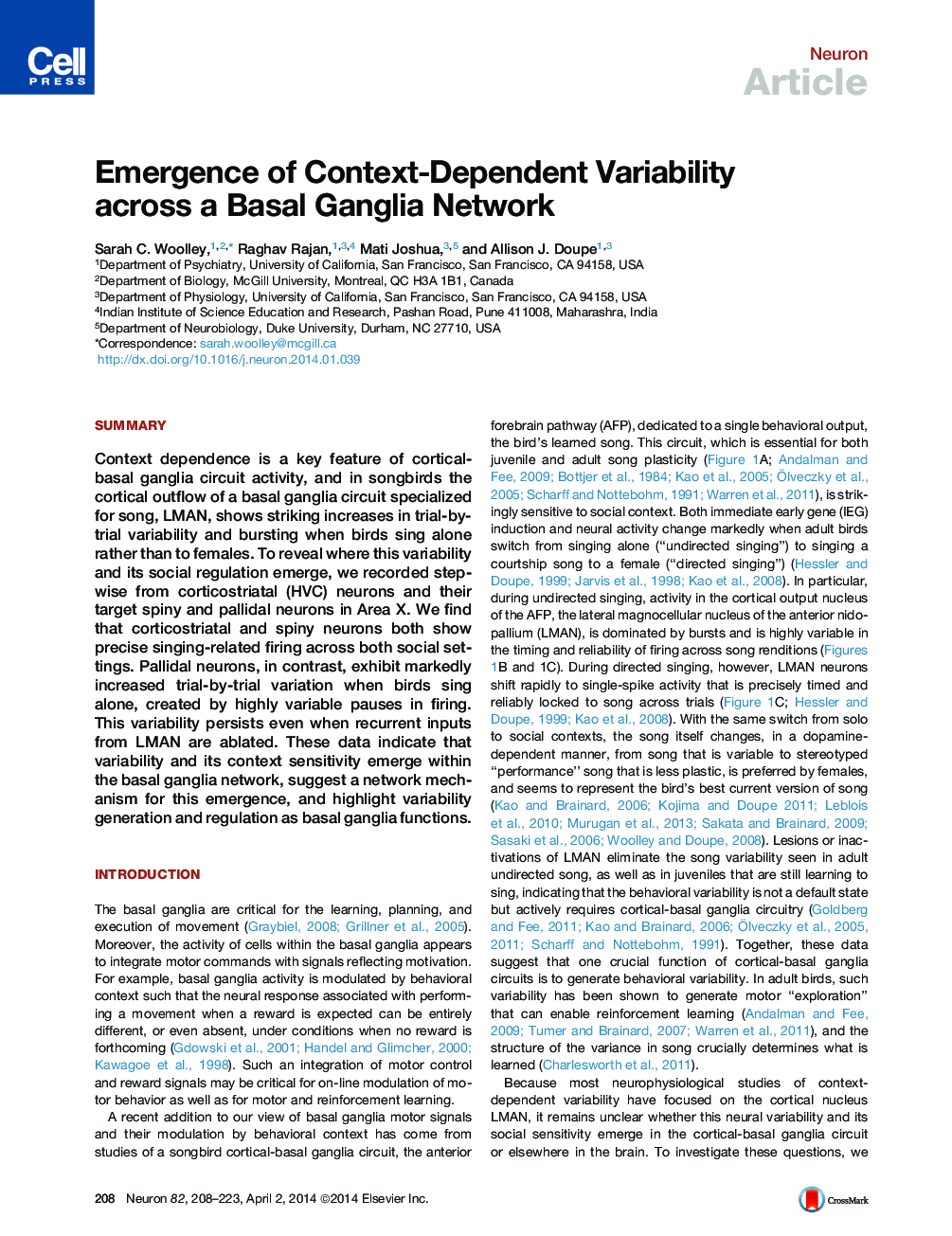| Article ID | Journal | Published Year | Pages | File Type |
|---|---|---|---|---|
| 4321092 | Neuron | 2014 | 16 Pages |
•Variability and its context sensitivity emerge in a basal ganglia network•Pallidal, but not spiny, neurons show social modulation of firing precision•Recurrent corticobasal ganglia input is not required for context-sensitive variability•A network model suggests variability could emerge via increased rate correlation
SummaryContext dependence is a key feature of cortical-basal ganglia circuit activity, and in songbirds the cortical outflow of a basal ganglia circuit specialized for song, LMAN, shows striking increases in trial-by-trial variability and bursting when birds sing alone rather than to females. To reveal where this variability and its social regulation emerge, we recorded stepwise from corticostriatal (HVC) neurons and their target spiny and pallidal neurons in Area X. We find that corticostriatal and spiny neurons both show precise singing-related firing across both social settings. Pallidal neurons, in contrast, exhibit markedly increased trial-by-trial variation when birds sing alone, created by highly variable pauses in firing. This variability persists even when recurrent inputs from LMAN are ablated. These data indicate that variability and its context sensitivity emerge within the basal ganglia network, suggest a network mechanism for this emergence, and highlight variability generation and regulation as basal ganglia functions.
